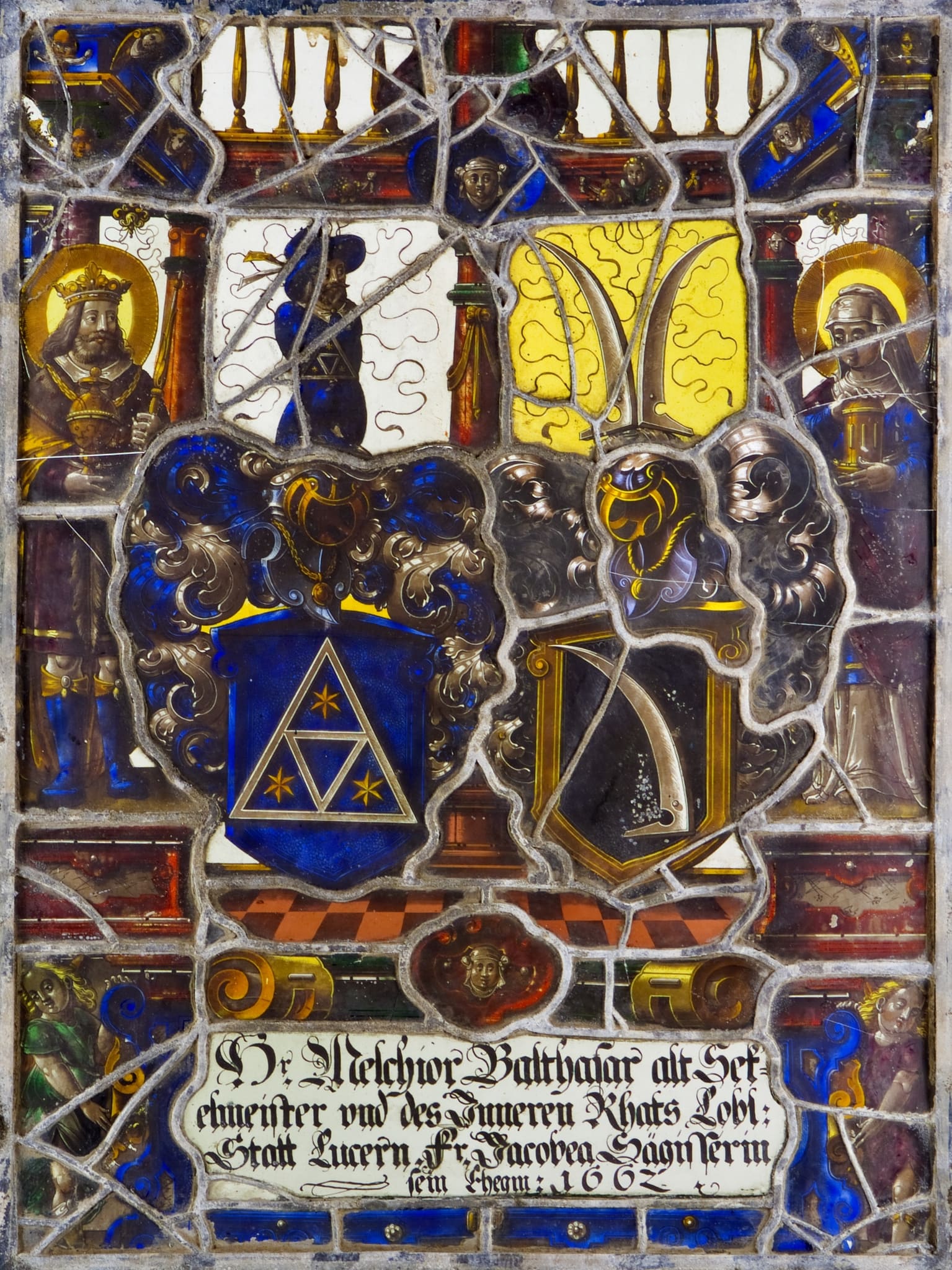Arms of husband and wife are set within an elaborate baroque architectural frame. The shields are surmounted by barred helms with rich mantling of the heraldic colors. Their crests are silhouetted against white and yellow ribboned grounds and they rest on an orange and black checkered floor. At the sides, framed by columns, are the name saints of the donors. To the left is Melchior, one of the Three Magi, who carries a scepter and a covered cup. He wears a gold mantle with an ermine collar over a purple robe and blue boots with a yellow trim. To the right is Mary Jacobea, also known as Mary Cleophas, who carries an unguent jar. She wears a white wimple, blue blouse, white skirt and purple mantle. A red and blue entablature at the top supports an open balustrade. In the center is a boss with a head wearing a turban. The lower third of the panel is occupied by the inscription panel. Angels flank a rectangular text on uncolored glass within a three-dimensional decorative border of blue embellished with yellow scrolls and a red boss.
46A122(SEGESSER) · Wappenschild, heraldisches Symbol (SEGESSER)
73B57 · die Anbetung durch die Heiligen Drei Könige: sie reichen dem Christuskind ihre Geschenke (Gold, Weihrauch und Myrrhe)
Arms of Balthasar, Melchior: azure, a triangle argent and within another triangle inverted of the same between three stars of six points or; crest on a barred helm to sinister a wreath of the colors and thereon a demi-man garbed in the first and charged upon his breast as the field; mantling of the first and third
Arms of Segesser, Jakobea: sable, a scythe blade argent a bordure or; crest on a barred helm to dexter a wreath of the colors and thereon a pair of scythe blades addorsed of the second; mantling of the colors. The arms are canting (speaking) arms using a play on words; sägesse can mean scythe.
Hr. Melchior Balthasar alt Sek-/elmeister und des Jnneren Rhats Lobl:/ Statt Lucern. Fr. Jacobea Sägisserin/ sein Ehegm: 1662
(Mr. Melchior Balthasar, treasurer and member of the Inner Council of the praiseworthy city of Lucerne, Mrs. Jacobea Segesser his wedded wife 1662)
none
